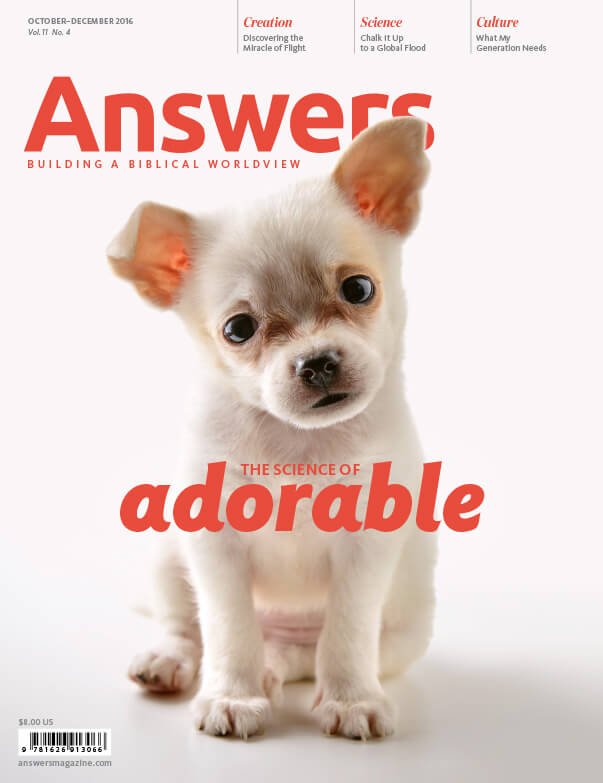Growing Plastics on the Farm
The master Engineer provided all the parts for plastics, long before the modern Plastic Age began.
Corn is an amazingly versatile creation. You can use corn to drive to a picnic, where you put kernels of corn on corn and scoop the kernels up with more corn to eat them. Huh? Well, you can drive to a picnic spot, powered by a mix of gasoline and ethanol—which is made from corn. Once there, you can put corn on a plate made from corn plastic and eat it with a plastic fork that is also made from corn. How can one plant do so many things? The answer is in God’s amazing design of polymers.
Polymers are the building blocks of life. The same molecules can be shuffled around from plants to animals and back to inanimate objects, forming an infinite variety of structures.
Molecules called monomers can attach in chains with thousands of repeating units to form polymers, which means “many parts.” Monomers in our bodies include amino acids, fructose, glucose, glycerol, and nucleotides. Plants, animals, and people consist of polymers called proteins, made from amino acids; carbohydrates, made from sugars; and nucleic acids, such as DNA, made from nucleotides.
These chemical chains that make life possible also make life better, warmer, even tastier. Natural polymers include cotton fibers, rubber, silk, wool, and honey. A century ago, researchers discovered they could convert plant oils and resins into new, man-made polymers for use as adhesives, paint, and early forms of plastic. Henry Ford even made a car body from soy plastic.
In the 20th century, wartime shortages and increasing demand for inexpensive consumer goods led to the development of several synthetic polymers, mainly from petroleum. Polymers derived from oil and natural gas are especially useful. Researchers can make petro-polymers that are flame resistant, flexible, hard, or have a host of other qualities. Common products range from synthetic rubber to modern plastics and special-purpose glues.
Sandwich bags, milk jugs, and some plastic containers consist of the petroleum-based monomer ethylene (H2C=CH2), which is linked to form the polymer polyethylene. The plastic pipes in your home come from another polymer called polyvinyl chloride, or PVC. Other synthetic polymers include carpet, latex paint, nylon, plastic toys, Styrofoam, nonstick Teflon, and even Silly Putty.
But our plastic paradise comes at a cost. As much as we depend on polymer products, they cause major problems. First, their production consumes billions of barrels of precious, nonrenewable oil every year. Second, petrochemical plants can be explosive and release toxic pollution. Worse yet, these plastics degrade slowly, often over centuries, cluttering our countryside.
So chemical engineers are turning back to natural, plant-based polymers, such as corn plastics. One benefit of polymers found in nature is that they are all biodegradable. God created His world with recycling mechanisms already in place. Sunlight, water, air, and microorganisms all degrade these chemicals.
Scientists are developing new ways to make more environmentally friendly plastics from plant materials. The plastic in those disposable picnic dishes was a polymer made from corn that is also widely used as a packaging material. Soybean-based plastics are used in disposable dishes, too, and in some insulation foams. These polymer products do not yet degrade as easily as other natural materials, but they are already helping us save resources and reduce waste. It makes good sense to build our products with the master Designer’s renewable materials.
See For Yourself . . .
Corn and soy aren’t the only biological materials that can be made into plastic. In this activity we will separate a solid polymer called casein bioplastic from milk. The name comes from a protein found in the milk.
Materials
- 1 cup of milk
- 4 tablespoons of white vinegar
- Stirring spoon
- Large strainer
- Several paper towels
- Water
- Glass bowl
- Cookie cutter (optional)
Procedure
Pour the milk into a glass bowl and heat with the stove or microwave oven until it is very warm to the touch. (Don’t bring the milk to the boiling point.)
Now add the vinegar and stir. Vinegar is dilute acetic acid (CH3COOH), which causes the casein plastic polymer to separate from the liquid as a gummy solid. Stir for one minute or until no more solid material forms.
Pour the bowl contents through the strainer. Rinse the plastic residue by running water over it and through the strainer. Now tip the soft plastic pieces onto the paper towels for drying. You can squeeze the material together by hand into a rubbery, golf-ball size lump. You might also want to flatten the milk plastic and cut out a shape using a cookie cutter. Put it aside for one to two days to dry and harden. The casein plastic is environmentally friendly and decomposes over time.
The polymer curds from milk may remind you of cottage cheese. In fact, there are some similarities between this activity and the making of mozzarella cheese. Before modern plastic was common, casein plastic from dairy products was dyed and formed into buttons, buckles, and jewelry. Strands of the plastic were woven as fabrics and even shaped into fountain pens.
Answers Magazine
October–December 2016
Your irresistible urge to snatch up that cute little puppy and hug it for all youʼre worth isnʼt just a feeling. Itʼs science.
Browse IssueRecommended Resources

Answers in Genesis is an apologetics ministry, dedicated to helping Christians defend their faith and proclaim the good news of Jesus Christ.
- Customer Service 800.778.3390
- Available Monday–Friday | 9 AM–5 PM ET
- © 2025 Answers in Genesis






